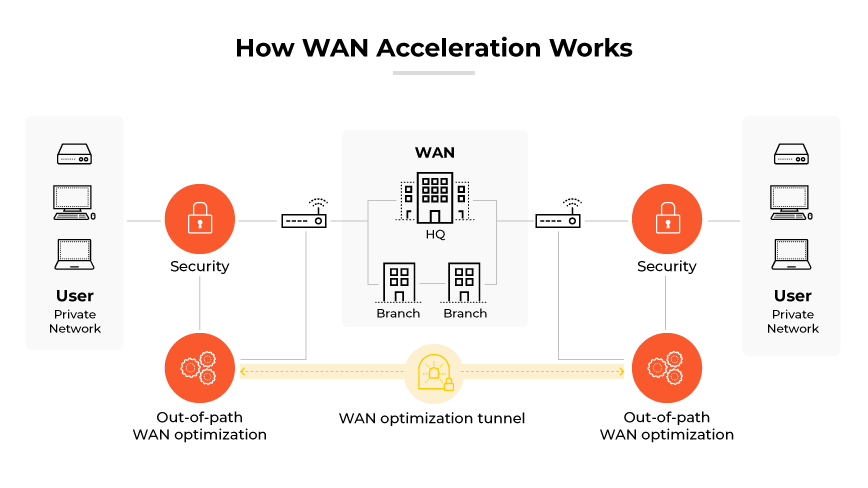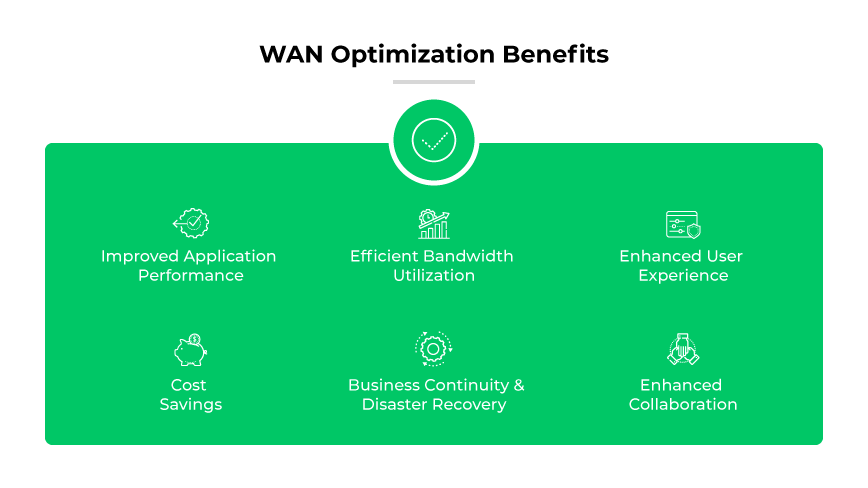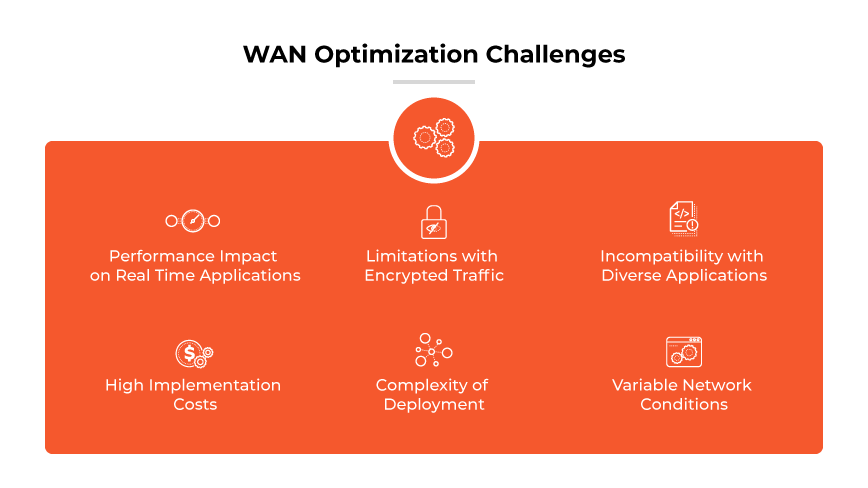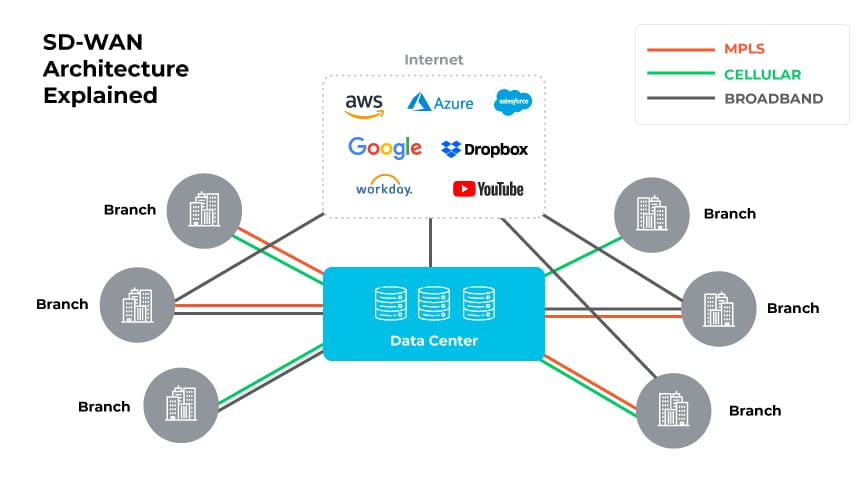-
Why Machine Learning (ML) and Artificial Intelligence (AI) Are Key Technologies for SD-WAN
- What Is Secure SD-WAN? | What It Is and How It Works
- What Is SD-WAN as a Service (SD-WANaaS)?
-
What Is SD-WAN Security? | SD-WAN Security Considerations
- What are the main security challenges of SD-WAN?
- What are the primary SD-WAN security features?
- What is AI’s role in improving SD-WAN security?
- What is the role of SASE in SD-WAN security?
- Do next-generation SD-WAN solutions provide better security?
- What is the difference between SD-WAN security and secure SD-WAN?
- SD-WAN security FAQs
- What Is Next-Generation SD-WAN?
-
What Is Managed SD-WAN?
- How does managed SD-WAN work?
- What are the differences between DIY and managed SD-WAN?
- Why do businesses need managed SD-WAN?
- Types of managed SD-WAN deployments
- What are the pros and cons of managed SD-WAN?
- What is the difference between managed SD-WAN and SD-WAN as a service?
- How to choose the right deployment model: managed SD-WAN, DIY, or a combination
- What Is Hybrid SD-WAN?
-
Branch Network Security | Securing Branch Networks with SD-WAN
-
What Is an SD-WAN Appliance? | SD-WAN Hardware & Equipment
- How do SD-WAN appliances work?
- What are the different types of SD-WAN appliances?
- What are the different SD-WAN appliance deployment models?
- What are the benefits of SD-WAN appliances?
- What are the common features of SD-WAN appliances?
- Security considerations for SD-WAN appliances
- How to choose the right SD-WAN appliance for your needs
- SD-WAN appliance FAQs
-
What Is an SD-WAN Gateway? | Definition, Explanation, Use Cases
- What are the limitations of hub-and-spoke architecture?
- What is the purpose of an SD-WAN gateway?
- What are the primary SD-WAN gateway use cases?
- What are the features of an SD-WAN gateway?
- What are the different types of SD-WAN gateway form factors?
- What are the disadvantages of an SD-WAN gateway?
- SD-WAN gateway FAQs
-
Traditional WAN vs. SD-WAN: What Are the Differences?
- How did traditional WAN evolve into SD-WAN?
- What is a WAN?
- What is SD-WAN?
- What are the differences between SD-WAN and WAN?
- What are the similarities between SD-WAN and WAN?
- What makes SD-WAN a better choice over WAN?
- When is traditional WAN the right choice?
- How to choose between WAN and SD-WAN
- Traditional WAN vs. SD-WAN FAQs
-
Top 5 Requirements for Securing Your Branch Offices
-
What are the differences between SD-WAN and SDN?
- What is SD-WAN (software-defined wide area network)?
- What is SDN (software-defined networking)?
- Primary SD-WAN use cases
- Primary SDN use cases
- What are the benefits of SD-WAN?
- What are the benefits of SDN?
- What are the potential implementation challenges of SD-WAN?
- What are the potential implementation challenges of SDN?
- What are the differences between SD-WAN and SDN?
- What are the similarities between SD-WAN and SDN?
- How to choose between SD-WAN and SDN
-
SD-WAN vs. NaaS: What Are the Differences?
- SD-WAN and NaaS in the current network services market
- What is SD-WAN?
- What is NaaS?
- What are the differences between SD-WAN and NaaS?
- What are the similarities between SD-WAN and NaaS?
- Will NaaS replace SD-WAN?
- How can SD-WAN and NaaS work together?
- What is the future of SD-WAN and NaaS?
- How to choose between SD-WAN and NaaS
- SD-WAN vs. NaaS FAQs
- How Do 5G and SD-WAN Work Together?
- SD-WAN vs MPLS vs Internet: What’s the Difference? Which is Right for Your Organization?
-
Types of SD-WAN Deployment Models: A Complete Guide
- Understanding modern SD-WAN capabilities and options
- What is SD-WAN?
- Types of SD-WAN management models
- DIY SD-WAN
- Fully managed SD-WAN
- Co-managed SD-WAN, aka Hybrid
- Managed CPE SD-WAN
- SD-WAN as a Service (SD-WANaaS)
- Types of SD-WAN deployment architectures
- Hub-and-spoke
- Mesh
- Hybrid mesh
- Types of SD-WAN deployment environments
- On-premises SD-WAN
- Cloud-based SD-WAN
- Hybrid SD-WAN
- How to choose the right SD-WAN deployment option for your business
- SD-WAN deployment models FAQs
- Top 7 SD-WAN Challenges: SD-WAN Risks, Issues, & Solutions
- MPLS | What Is Multiprotocol Label Switching
-
How to Execute an MPLS to SD-WAN Migration Step-by-Step
- Why do organizations switch from MPLS to SD-WAN?
- How is SD-WAN a better alternative to MPLS?
- What are the options for migration from MPLS to SD-WAN?
- Should you use an MSP for your MPLS to SD-WAN migration?
- What are the MPLS to SD-WAN migration challenges you can expect?
- Is there a middle ground between MPLS and SD-WAN?
- If your organization is planning an MPLS to SD-WAN migration, is SASE worth considering?
- How to create a successful MPLS to SD-WAN migration plan
- MPLS to SD-WAN migration FAQs
- How much does SD-WAN cost?
- How Does SD-WAN Automation Simplify Network Operations?
- How Are Firewalls and SD-WAN Related?
- How SD-WAN helps Today’s IoT
-
What Is SD-WAN Multicloud?
- What is the Difference Between SD-WAN and MPLS?
What Is WAN Optimization (WAN Acceleration)?
WAN optimization (WAN acceleration) is the process of enhancing data transfer efficiency across a wide area network between data centers and remote locations.
WAN acceleration reduces data redundancy using deduplication, data compression, and optimizing protocols to overcome latency. WAN optimization ensures network traffic is prioritized, allowing critical applications to perform better despite distance and varied network quality.
What Is a WAN Optimizer?
A WAN optimizer enhances the efficiency and speed of data transfer across a wide area network (WAN). It is designed to optimize the flow of information where data is transmitted between central data centers and branch offices or users in remote locations. The primary function of a WAN optimizer is to overcome the typical challenges of a WAN network such as high latency, limited network bandwidth, and packet loss.
Implementing a WAN optimizer involves applying various techniques to streamline data passage over WAN links. These tools shape traffic to prioritize essential data and applications, ensuring business functions have the network bandwidth they need to perform effectively.
WAN optimizers can take the form of hardware appliances located at network endpoints, virtual services hosted in the cloud, or software applications that can be installed on existing network infrastructure.
They are instrumental in creating a more responsive, reliable WAN, which is vital for organizations with geographic diversity. By enhancing data flow, WAN optimizers contribute significantly to the smooth operation of a network.
Why Is WAN Optimization Important?
WAN optimization is important because it directly impacts WAN performance and reliability. As organizations increasingly adopt modern applications and support remote workforces, the demand on WANs grows. Efficient WANs are essential for ensuring data intensive applications perform well and communication remains consistent across distributed networks.
WAN acceleration also addresses network bandwidth costs. Bandwidth is a costly resource, and increasing it is not always feasible or economical. WAN optimization makes better use of existing bandwidth by optimizing data flows, reducing unnecessary data transfer, and mitigating network latency. This optimization is cost effective and enhances the overall user experience by improving access to critical applications and services.
WAN optimization plays a vital role in network scalability and agility. As data volumes expand and the need for real time data access becomes more pronounced, networks must be able to handle increased traffic without service degradation. WAN optimization technologies enable networks to adapt to changing data patterns and ensure business processes are given priority in data transfer.
How Does WAN Acceleration Work?

WAN optimization, or WAN acceleration, involves a set of technologies and methodologies designed to maximize the efficiency of data flow across over WAN links. By addressing issues like network latency, bandwidth constraints, and packet loss, WAN acceleration enhances the performance of networks, particularly in environments where data must travel long distances.
By integrating these components, WAN acceleration tackles the inherent challenges of wide area networks, allowing for more efficient, reliable, and cost-effective enterprise networking.
Data Caching and Deduplication
Data caching is a technique that stores frequently accessed information in a local memory store. Data caching reduces the need to send the same data across the WAN multiple times. This is complemented by data deduplication, which eliminates duplicate copies of data. Together, they significantly reduce the amount of data traversing the WAN, speeding up data transfers and reducing bandwidth requirements.
Data Compression
Data compression shrinks the size of data files so that they consume less bandwidth when sent across WAN links. This is similar to how a ZIP file works, enabling more data to be sent in a smaller package. The process is crucial for optimizing the use of available bandwidth and improving the transfer speeds of large files.
Traffic Shaping and Prioritization
Traffic shaping involves managing the flow of data across the network to prioritize critical applications. By controlling bandwidth allocation and setting priorities for different types of traffic, WAN optimization ensures essential data reaches its destination promptly, enhancing overall network performance.
Protocol Optimization
Protocol optimization, sometimes known as protocol spoofing, reduces the overhead that certain 'chatty' protocols introduce. It streamlines the communication process between client and server. Streamlining decreases the number of acknowledgments and handshakes required, which reduces network latency and improves data transfer rates.
Network Monitoring
Continuous network monitoring is essential for identifying and managing traffic, enabling WAN optimization technologies to prioritize the performance of critical applications. By monitoring network traffic in real time, WAN optimizers can allocate resources more efficiently. Efficient resource allocation ensures nonessential traffic does not impede the performance of key business functions.
WAN Optimization Benefits

Improved Application Performance
WAN optimization enhances the application performance by overcoming network latency and reducing data transfer times. Techniques like protocol optimization and application acceleration ensure data packets move across the network more efficiently. This results in quicker access to applications and data, which is especially beneficial for time-sensitive processes.
Efficient Bandwidth Utilization
By employing methods like data deduplication and compression, WAN optimization makes efficient use of available bandwidth. This prevents the need for costly network upgrades by ensuring existing bandwidth can support the growing demands of business applications and services.
Enhanced User Experience
A direct benefit of WAN optimization is the improved experience for end users, particularly for those in remote locations or branch offices. Fast, reliable access to network resources is critical for productivity and user satisfaction. WAN optimization directly contributes to these factors by minimizing delays and disruptions in data access.
Cost Savings
Organizations may achieve cost savings through WAN optimization. By optimizing bandwidth and reducing the need for additional network capacity, businesses can avoid expensive upgrades. WAN optimization allows for more effective use of cloud services and other IT resources, further reducing operational costs.
Business Continuity and Disaster Recovery
WAN optimization supports business continuity by enhancing backup and replication efficiency. Faster and more reliable data transfers mean disaster recovery efforts can be executed more swiftly, reducing downtime and associated costs of interruptions.
Enhanced Collaboration
For distributed workforces, WAN optimization is essential for effective collaboration. It supports real time applications like video conferencing and collaborative software, ensuring distance is not a barrier to effective communication and teamwork across the network.
WAN Optimization Challenges

Performance Impact on Real-Time Applications
Real time applications like voice and video conferencing require immediate data transfer and low latency. WAN optimization, which often involves data caching and protocol optimization, can inadvertently introduce delays in processing these real-time data streams, potentially impacting performance.
Limitations with Encrypted Traffic
As security measures tighten and more data is encrypted, WAN optimization faces the challenge of optimizing this traffic. Encrypted data does not lend itself to deduplication or compression because encryption masks the data patterns these techniques rely on.
Incompatibility with Diverse Applications
While WAN optimization effectively accelerates many types of applications, it can be less effective with those that do not have repeatable data patterns, including encrypted or already compressed files. These applications see minimal benefit from deduplication and compression.
Variable Network Conditions
WAN optimization can enhance network performance under normal conditions. However, in scenarios with extreme packet loss or severe congestion, effectiveness of WAN optimization techniques can diminish. WAN optimization techniques cannot compensate for fundamental physical network limitations.
High Implementation Costs
The deployment of WAN optimization solutions often involves substantial upfront costs, including specialized hardware and software. As network demands grow, these solutions require scaling, further increasing the investment.
Complexity of Deployment
Configuring WAN optimization solutions can be complex, requiring the management of multiple devices across different sites. This complexity demands a certain level of expertise and can be resource intensive in terms of planning and ongoing management.
WAN Optimization vs. SD-WAN

WAN optimization and SD-WAN are two distinct approaches to enhancing the performance and efficiency of wide area networks. The two technologies serve different but complementary roles within the network infrastructure.
WAN optimization is primarily concerned with maximizing the data flow efficiency over a given WAN connection. It uses techniques like data deduplication, compression, and protocol optimization to reduce latency and bandwidth usage, aiming to improve the performance of the existing network without altering its basic structure.
SD-WAN, or software-defined wide area networking, takes a broader approach. Instead of focusing on data efficiency alone, SD-WAN manages and optimizes the network by routing traffic across the most effective paths. It uses a centralized control function to direct traffic across the WAN, increasing agility, performance, and reliability. SD-WAN is less about optimizing individual data flows and more about managing the network as a whole.
While WAN optimization works within the confines of existing network architecture, SD-WAN can reconfigure how different network paths are used, creating a virtual overlay across multiple transport media. SD-WAN can enhance overall network performance by choosing the best route for traffic, while WAN optimization ensures that the data traveling those routes is streamlined.
For organizations looking to benefit from both WAN optimization and SD-WAN, a unified approach can be the most effective. By integrating WAN optimization capabilities within an SD-WAN framework, it is possible to achieve both the efficient use of bandwidth and the intelligent path selection that SD-WAN provides. This integrated solution can ensure data travels efficiently, securely and reliably across the network.
Organizations should seek solutions that provide the best of both worlds. Many providers offer platforms that incorporate both SD-WAN and WAN optimization features, delivering a comprehensive network solution. These platforms often include additional capabilities such as security and cloud access optimizations, making them suitable for businesses looking to streamline operations and embrace digital transformation strategies.
